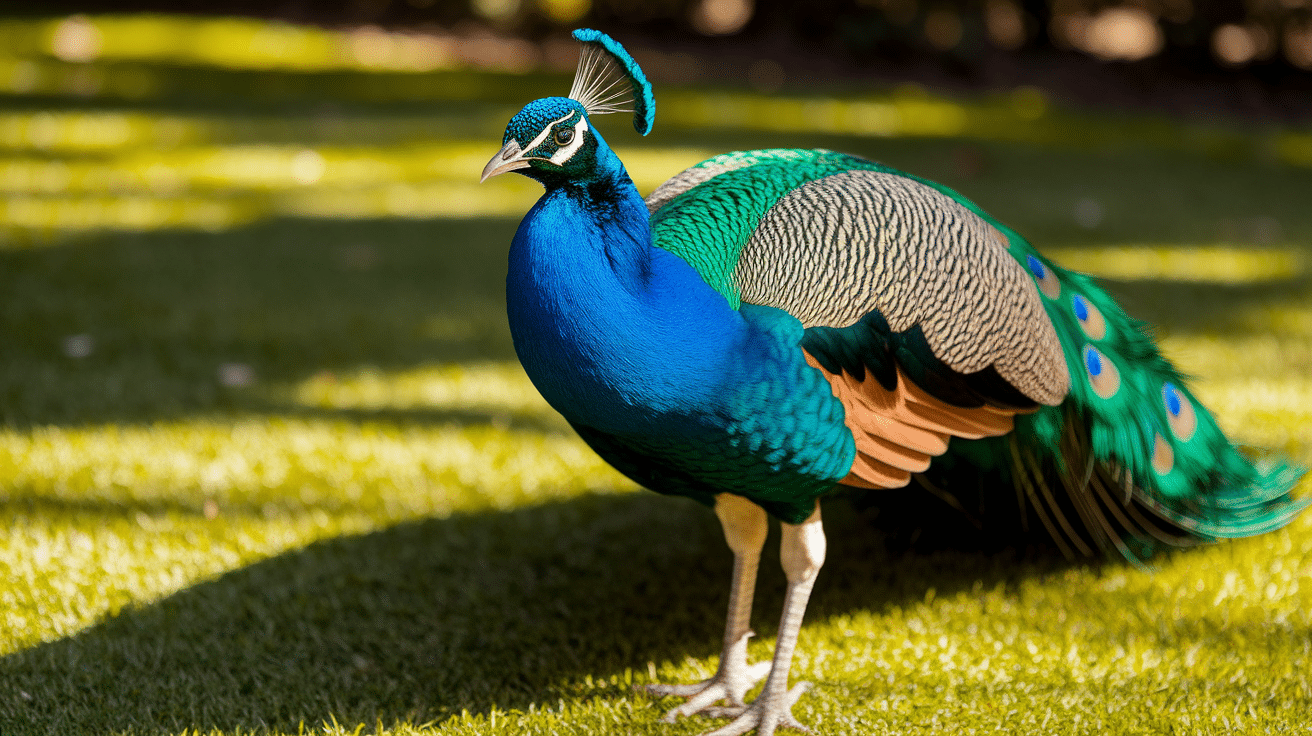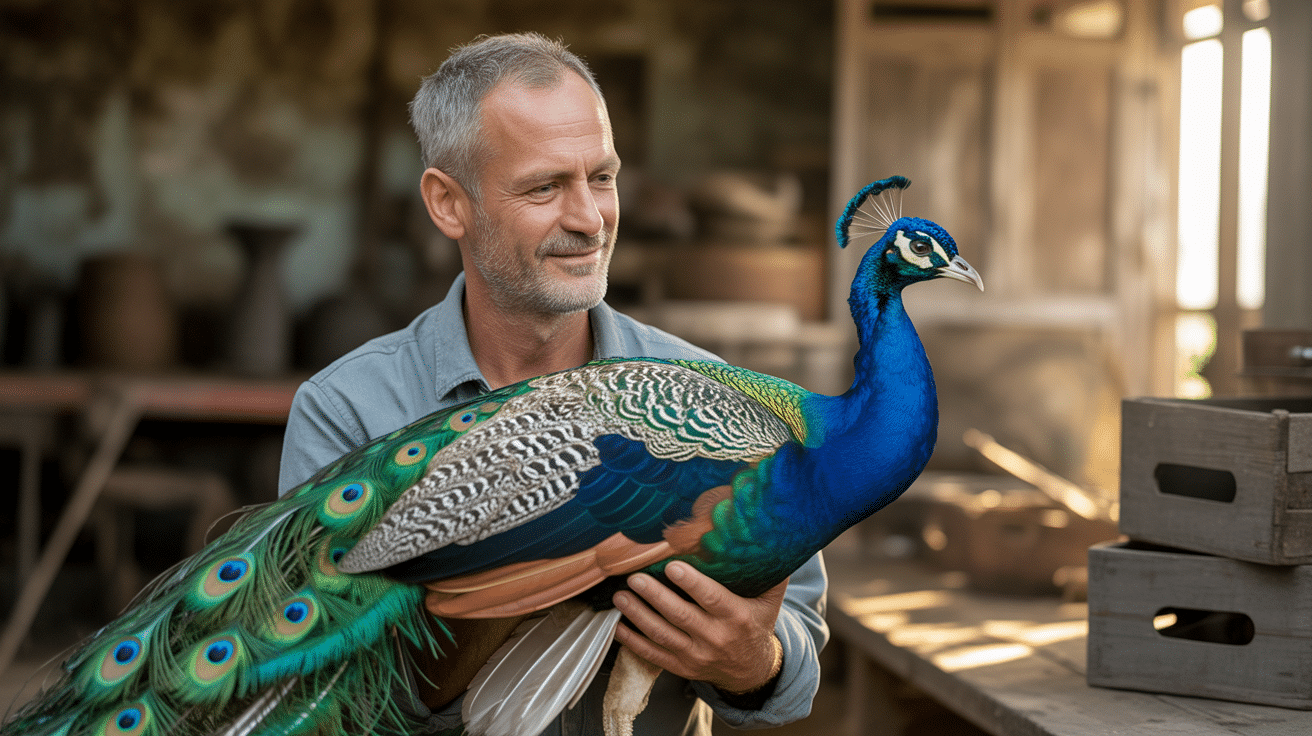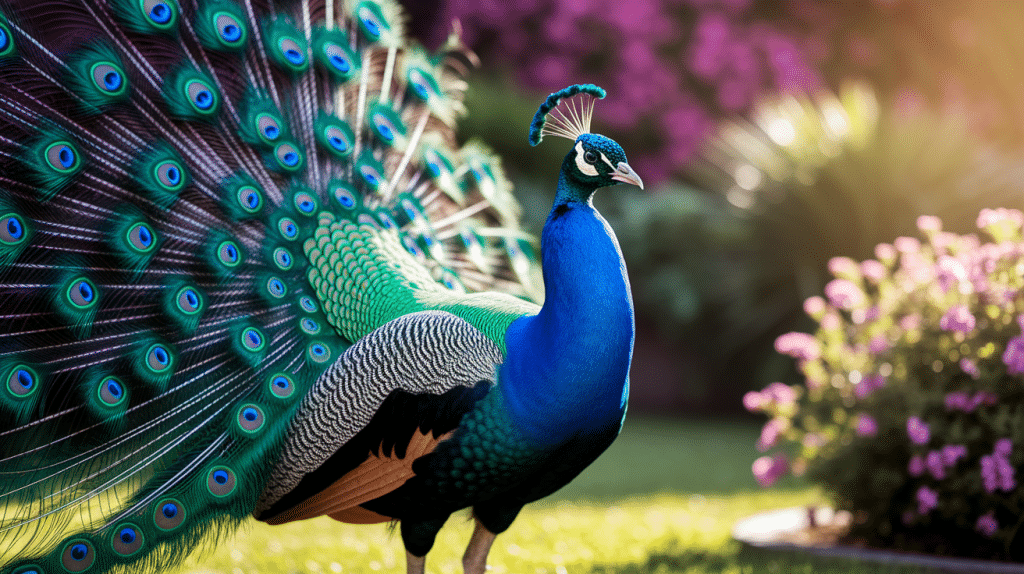Ever admired a peacock up close, and that beautiful bird suddenly turned on you? It happens. These birds look fancy in pictures, but in real life, they can be quite moody.
Peacocks aren’t just walking feather displays. They can get pretty upset when people come too close to their space or their babies.
In this guide, we’ll share what makes peacocks mad, how to spot when they’re getting angry, and what to do if one decides you’re not welcome.
By the time you finish reading, you’ll know exactly how to enjoy watching these birds without getting pecked or chased.
What Makes Peacocks Aggressive?
Male peacocks, also called peafowl, become most aggressive during mating season. This occurs in the spring and early summer, when they’re attempting to attract females and defend their territory.
Here are the main reasons peacocks get aggressive:
Mating competition – Males will fight other males to win the attention of females
Nesting areas – Females with eggs or young chicks become defensive
Feeling threatened – Any perceived danger to themselves or their group
Food protection – They may act aggressively when defending food sources
Peacocks use several warning signs before they attack. They’ll often raise and shake their tail feathers, make loud calls, and move toward what they see as a threat. If you notice these behaviors, it’s best to back away slowly.
Are Peacocks Dangerous to Humans?
While a peacock might chase you or peck at your legs if it feels threatened, these birds can’t cause serious harm. Their beaks and claws aren’t strong enough to hurt adults badly.
Children need to be watched around peacocks, as a scared child might fall while running away. Just give peacocks space, don’t corner them, and you’ll have no problems.
Ways to Avoid Peacock Aggression

- Stay Calm: Panicking can make the situation worse. Keep your cool to avoid escalating the bird’s behavior.
- Give Space: If you spot a peacock, maintain a safe distance. Avoid approaching the bird too closely.
- Don’t Feed Them: Feeding peacocks can lead to aggressive behavior. Let them find food naturally.
- Avoid Sudden Movements: Quick or jerky movements may trigger the peacock to feel threatened. Stay calm and move slowly.
- Respect Their Territory: If a peacock is guarding an area, like a nest, avoid walking too close to it. They may become territorial.
- Be Aware of Mating Season: During mating season, peacocks become more protective and may exhibit aggression. Be extra cautious during this time.
- Alert Others: If you see someone nearby who’s unaware of the peacock, kindly warn them to avoid getting too close.
Peacocks as Pets
Keeping peacocks as pets isn’t like having a cat or dog. Several peacock owners emphasize that these birds require a lot of space, at least 80-100 square feet per bird. They’re loud neighbors, with calls that can reach 100 decibels.
Peacocks live 15-20 years and cost about $35-275, depending on age and type. They need strong fences at least 6 feet tall since they can fly short distances. They eat special bird feed, grains, fruits, and bugs.
They don’t like being handled and aren’t cuddly pets. Before getting peacocks, check local laws – many towns prohibit them due to noise. We suggest visiting peacock farms first to see if their care needs match your situation.
Safety Tips for Peacock Owners

It’s always better to be safe and prevent any mishap. Here are some of the tips to avoid getting in conflict with your pet peacock:
| TIP | DESCRIPTION |
|---|---|
| Create Safe Enclosures | Ensure your peacock has a secure, fenced area to keep it safe from danger and unwanted visitors. |
| Supervise Interactions | Always supervise interactions between your peacock and others, especially children, to prevent aggression. |
| Provide Plenty of Space | Give your peacock ample space to roam, reducing stress and territorial aggression. |
| Handle with Care | Handle your peacock gently and calmly to avoid startling it and motivate positive behavior. |
| Train for Safety | Train your peacock with basic commands to manage aggression and ensure safety. |
| Keep a Routine | Establish a consistent routine for feeding and care, helping your peacock feel secure. |
| Educate Visitors | Inform visitors on how to approach or interact with your peacock to avoid unwanted behavior. |
Conclusion
So, are peacocks really aggressive? From what’s mostly seen, they’re not out to get you, but they will stand their ground if they feel cornered.
Think of them as that flashy neighbor who mostly keeps to themselves but gets grumpy if you step on their lawn.
If you’re at a park with peacocks, keep a sensible distance. And if you’re motivated enough to keep them as pets, make sure you’ve got the space and setup they need.
Bottom line: peacocks just want to show off their feathers and find a mate without being bothered. Can’t blame them for that, right?















